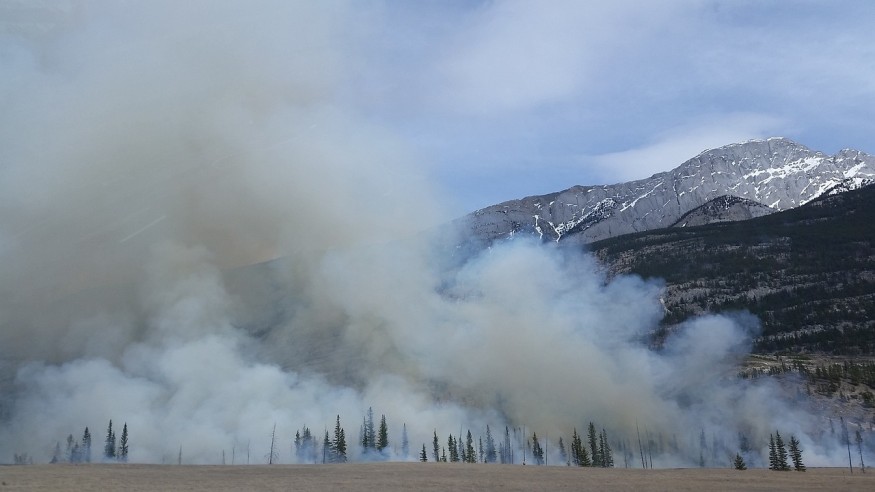
Scientists warn that wildfire smoke can carry harmful pathogens and fungi that may cause sicknesses even in cities far from the origin of the fire.
The US is experiencing an increase in wildfires as temperatures rise. The ability of wildfire smoke to carry soot has long been known, but recent research shows that perhaps the threat is more nuanced than previously thought.
Pathogens can be snatched up from disturbed soil as well as charred vegetation and transported far from the fire lines by the churning convection in those massive plumes. Many of those microorganisms are still alive and could potentially spread infections.
Researchers are particularly concerned about fungi because they can cause incapacitating and even fatal slow-growing internal infections, which are challenging to identify and treat. This includes the fungus that causes valley fever, which thrives in the arid soils of the West, causes a serious condition that closely resembles pneumonia, and is moving further north as the climate continues to warm.
Studies and Evidence
Drones carrying sampling gear have already provided proof that smoke plumes are brimming with live bacteria and fungi. Early research has connected a significant fire in California in 2017 with an increase in hospital patients that have fungal infections up to 200 miles away. Currently, several research initiatives are working to precisely pinpoint the microbial components of smoke and to compare infection data. This includes maps showing the directions in which wildfire smoke drifts during the season.
George R. Thompson, a professor from the University of California, Davis, School of Medicine, said that His team has discovered numerous bacterial and fungal pathogens that pose a serious risk, especially to immunocompromised patients, such as cancer chemotherapy patients and people taking immune-suppressive medications due to autoimmune disease.
However, establishing a connection to a specific patient's illness can be difficult. He notes that these smoke plumes frequently pass over several states. Thompson is a medical professional with a focus on invasive fungal infections.
Wildfire Battlescars
Researchers were already aware that crews fighting fires on the front lines run the risk of contracting infectious diseases. The US Centers for Disease Control and Prevention, and the California Department of Public Health, among others, reported in August that seven crew members who battled a 2021 wildfire developed coughs, chest pain, and breathing difficulties. Lab tests on three of them revealed infections with valley fever.
Ten firefighters from a state prison crew were found to have also contracted valley fever in 2017, according to additional CDC and California state researchers. Some of these individuals had severe cases that led to meningitis and respiratory failure.
The firefighters told the two teams of investigators that they were not provided with respiratory protection in both incidents, during which they were either completely engulfed in dust and smoke or engaged in earthmoving activities such as digging ditches and firebreaks. Therefore, their illnesses may have been brought on by spores inhaled from smoke or by fungus-containing dust and dirt that was stirred up by digging or soil disturbance.
Uptick in Infectious Diseases
However, the rise in invasive fungal infections that researchers from several federal agencies as well as the University of California, San Francisco, observed in regular people who were admitted to 22 California hospitals after that fire in 2017 probably can't be explained by proximity to dust and dirt. Fungal infections include valley fever, mold, and aspergillosis, a fungus that thrives in decaying vegetation.
According to Naomi Hauser, an assistant professor of medicine at UC Davis, it is also impossible to account for the perplexing increases in infections that happen during the same season as fires. Hauser is also an infectious disease physician, Wired reports.
© 2025 NatureWorldNews.com All rights reserved. Do not reproduce without permission.





